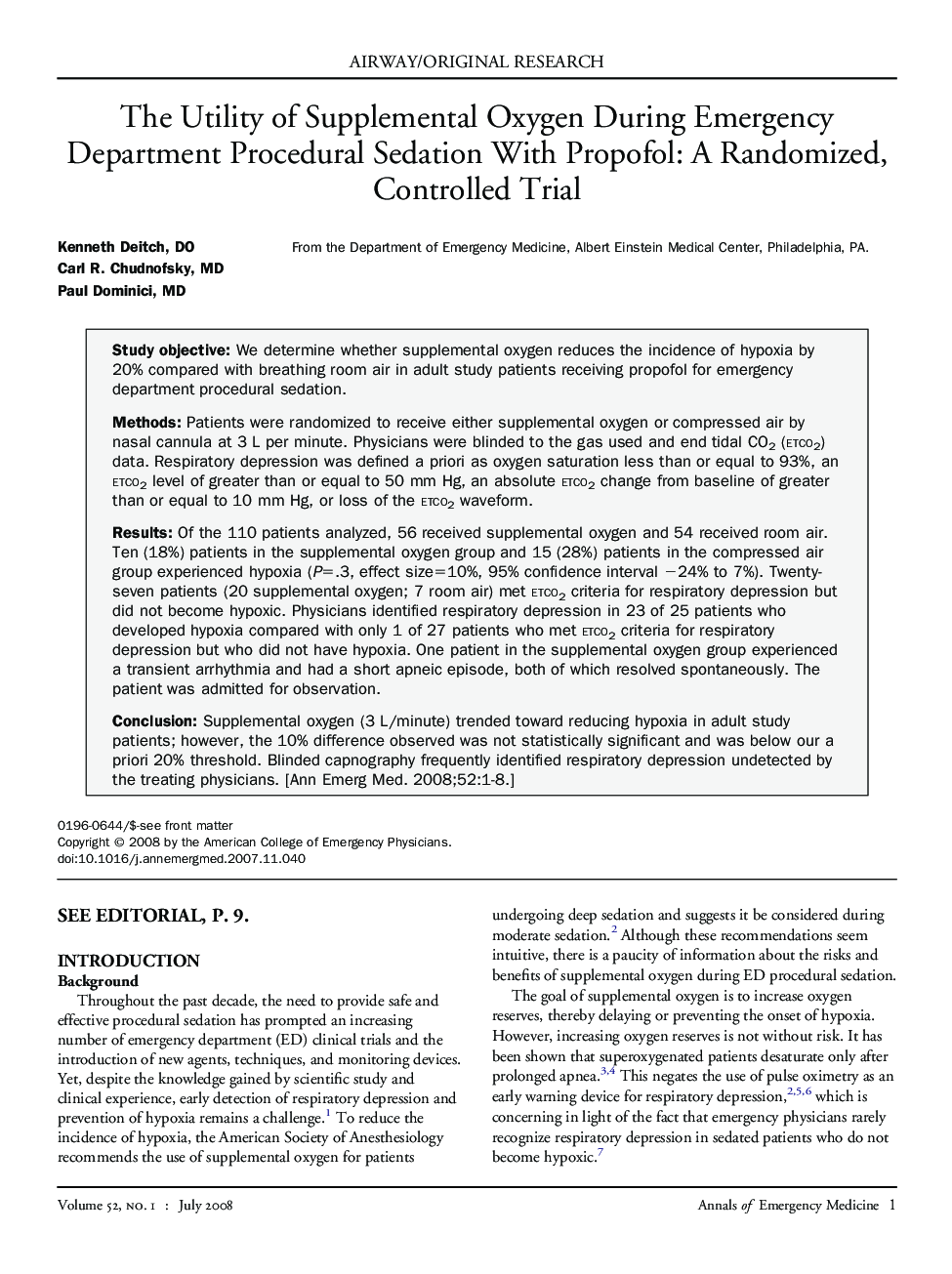| Article ID | Journal | Published Year | Pages | File Type |
|---|---|---|---|---|
| 3233056 | Annals of Emergency Medicine | 2008 | 8 Pages |
Study objectiveWe determine whether supplemental oxygen reduces the incidence of hypoxia by 20% compared with breathing room air in adult study patients receiving propofol for emergency department procedural sedation.MethodsPatients were randomized to receive either supplemental oxygen or compressed air by nasal cannula at 3 L per minute. Physicians were blinded to the gas used and end tidal CO2 (etco2) data. Respiratory depression was defined a priori as oxygen saturation less than or equal to 93%, an etco2 level of greater than or equal to 50 mm Hg, an absolute etco2 change from baseline of greater than or equal to 10 mm Hg, or loss of the etco2 waveform.ResultsOf the 110 patients analyzed, 56 received supplemental oxygen and 54 received room air. Ten (18%) patients in the supplemental oxygen group and 15 (28%) patients in the compressed air group experienced hypoxia (P=.3, effect size=10%, 95% confidence interval −24% to 7%). Twenty-seven patients (20 supplemental oxygen; 7 room air) met etco2 criteria for respiratory depression but did not become hypoxic. Physicians identified respiratory depression in 23 of 25 patients who developed hypoxia compared with only 1 of 27 patients who met etco2 criteria for respiratory depression but who did not have hypoxia. One patient in the supplemental oxygen group experienced a transient arrhythmia and had a short apneic episode, both of which resolved spontaneously. The patient was admitted for observation.ConclusionSupplemental oxygen (3 L/minute) trended toward reducing hypoxia in adult study patients; however, the 10% difference observed was not statistically significant and was below our a priori 20% threshold. Blinded capnography frequently identified respiratory depression undetected by the treating physicians.
